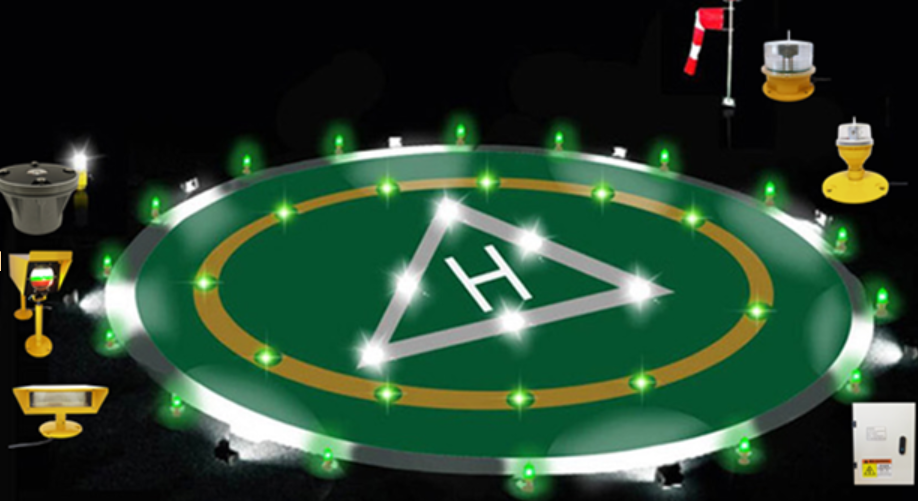Helipads are critical infrastructure for various sectors, from emergency medical services to corporate transportation. To ensure the safe and efficient operation of helicopters, strict design guidelines must be adhered to. These guidelines cover multiple aspects, each contributing to the overall functionality and safety of the helipad.
Location and Site Selection
The first and foremost consideration in helipad design is the location. The site should be free from obstacles that could interfere with helicopter operations. For example, tall buildings, power lines, and communication towers should be at a safe distance. In urban areas, finding a suitable location can be challenging, but it's crucial to choose a spot with a clear approach and departure path. A helipad near a hospital, for instance, should be close enough to the emergency department for quick patient transfer, yet far enough from other structures to avoid any potential hazards during take - off and landing.

The terrain of the site also matters. A flat or gently sloping area is ideal to ensure stable landings. Uneven terrain can cause the helicopter to tilt during touchdown, which may lead to accidents. Additionally, the soil condition should be considered. If the soil is too soft, it may not be able to support the weight of the helicopter, necessitating additional ground - reinforcement measures.
Dimensions and Layout
Helipad dimensions are determined by the types of helicopters that will be using it. The touchdown and take - off area (TLOF) should be large enough to accommodate the helicopter's size and provide sufficient clearance. For smaller helicopters, a TLOF of around 20 - 25 meters in diameter may be sufficient, while larger ones may require a diameter of 30 - 50 meters.
The layout of the helipad should also include a safety area around the TLOF. This area serves as a buffer zone in case the helicopter veers off - course during landing or take - off. The safety area is typically at least 1.5 times the diameter of the TLOF. Markings on the helipad are also important. Clear markings indicate the center of the TLOF, the approach path, and any restricted areas. For example, a white cross or a "H" symbol is commonly used to mark the center of the helipad.
Lighting and Signage
Proper lighting is essential for helipads, especially those used during low - visibility conditions. As mentioned before, green lights are used to indicate the TLOF and signify that it's safe to land or take off, while red lights mark obstacles or restricted areas. Approach lighting systems, such as a series of white lights forming a V - shaped pattern, guide the pilot during the approach.
Signage on the helipad is equally important. Signs should provide information about the helipad's rules, such as maximum weight limits, wind direction indicators, and any special instructions. These signs should be clearly visible and easy to read from the air.
Surface and Structural Considerations
The surface of the helipad must be able to withstand the weight and force of the helicopter's landing gear. Paved surfaces, such as concrete or asphalt, are commonly used as they offer good stability and durability. However, in some cases, grass or gravel surfaces may be acceptable, provided they are properly maintained.
Structurally, if the helipad is located on a rooftop or a raised platform, the supporting structure must be strong enough to bear the weight of the helicopter and any additional loads. Adequate reinforcement and engineering calculations are necessary to ensure the structural integrity of the helipad.
Compliance with Standards
Helipad design guidelines are often based on international and national standards. The International Civil Aviation Organization (ICAO) and local aviation authorities set standards for helipad design, covering everything from dimensions and lighting to safety requirements. Adhering to these standards not only ensures safety but also facilitates the acceptance of the helipad for various operations.
In conclusion, helipad design guidelines are a comprehensive set of rules and considerations that are essential for the construction of a safe and functional helipad. From location selection to compliance with standards, each aspect contributes to the overall success of helicopter operations. By following these guidelines, we can build helipads that meet the needs of users while maintaining the highest level of safety.